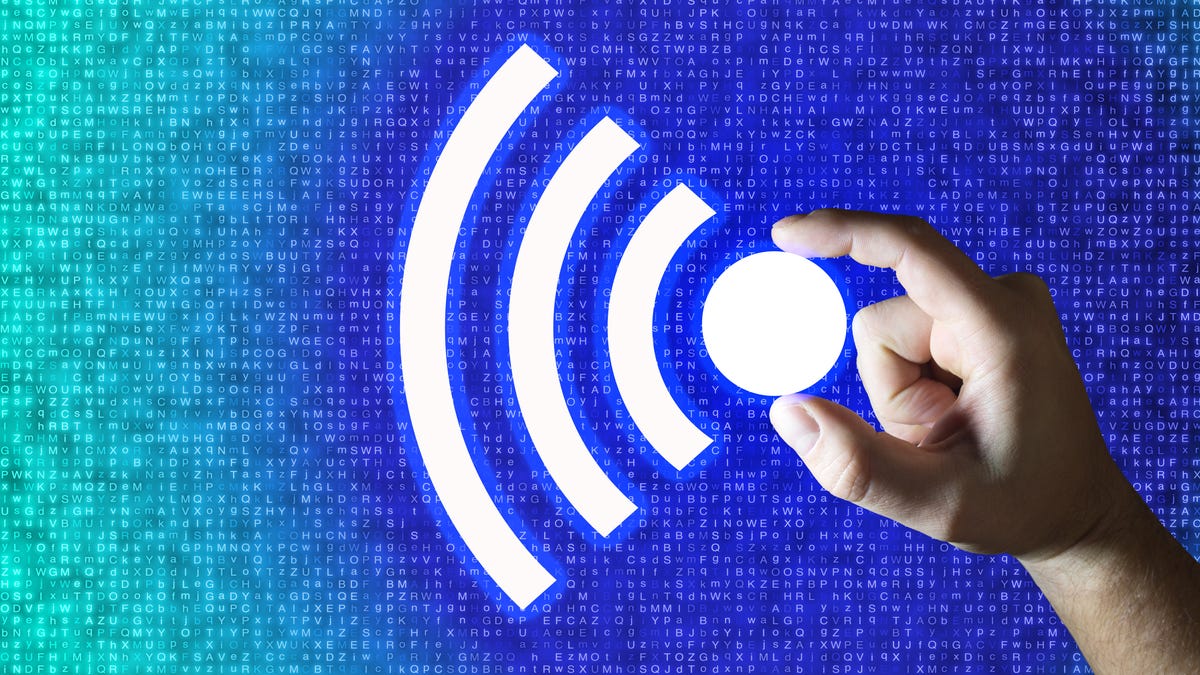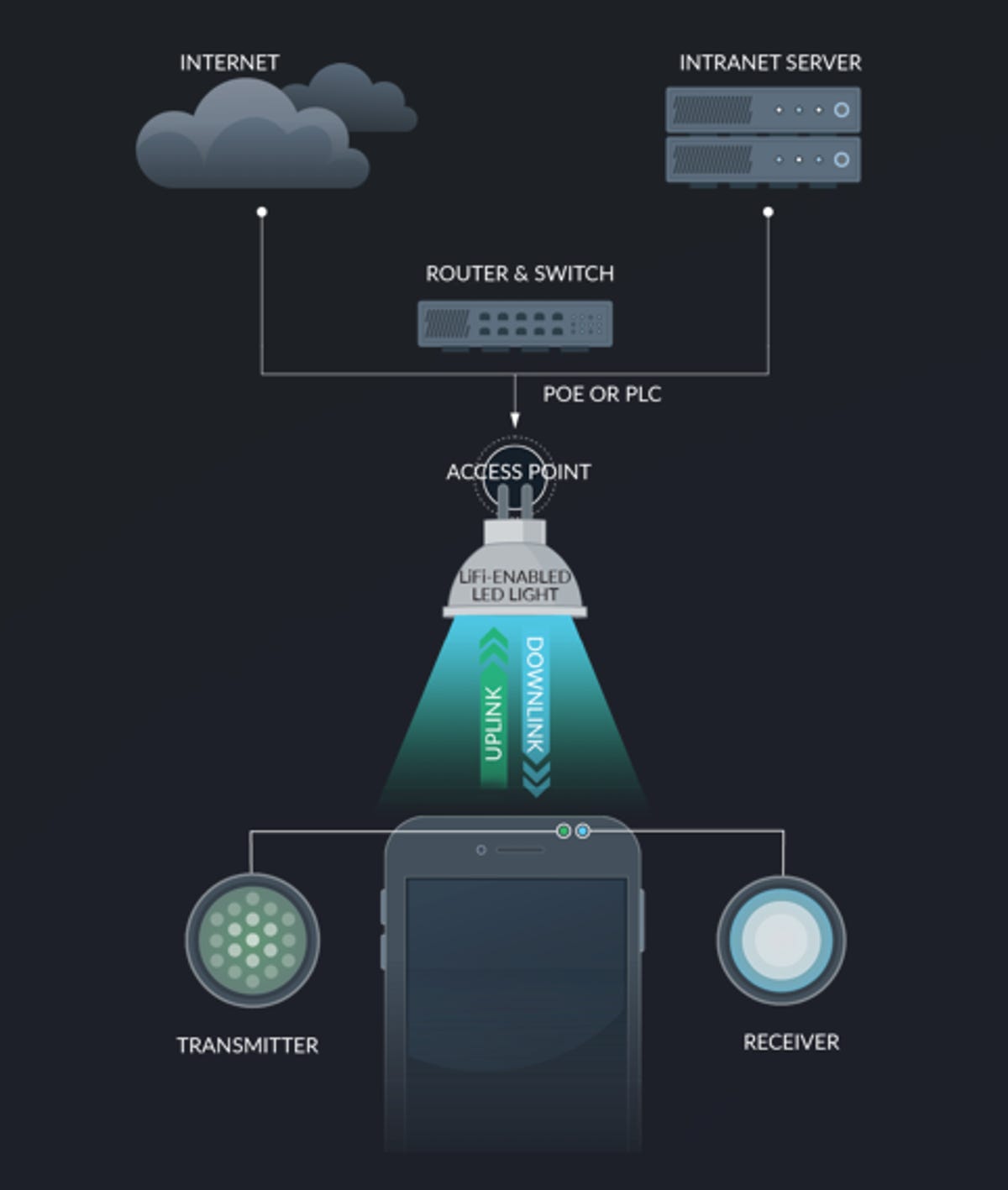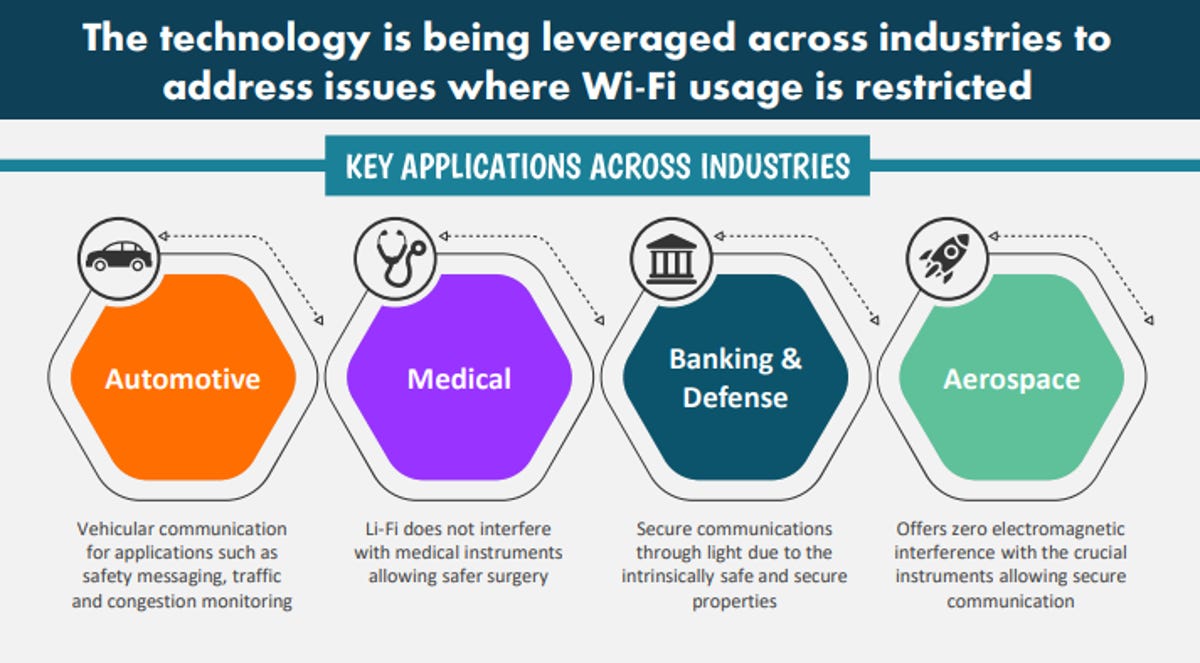What is Li-Fi? Could it be the future of internet connectivity?




A new and unique technology is on the horizon, with the potential to change the way we connect to the internet. It offers different benefits than traditional Wi-Fi, although it’s too early to say what this means for broadband in our homes. So, what is this new technology and how does it work?
What is Li-Fi?
Light fidelityalso known as Li-Fi, uses the power of light to transmit data. Unlike Wi-Fi, which uses radio waves to create a wireless connection, Li-Fi relies on light to transmit data. Through this process, Li-Fi promises speeds 100 times faster than Wi-Fi.
Research into Li-Fi has been around since the early 2000s. Together with his team, German physicist Harald Haas developed this technology by discovering that light can be used for two-way data transmission. It wasn’t long before the French company Oldecommone of the world leaders in this technology, began conducting experiments with Li-Fi in 2008. In July, Europe launched Ariane 6 into spacewhere four experiments were conducted, one of which was aimed at testing Li-Fi technology.
How does Li-Fi work?

Li-Fi functions as a Visible light communication system; at its core, data is transferred from LED lights. These lights carry light pulses that produce information similar to Morse code. No, this process cannot be seen with the naked eye. The game-changers in this scenario are the compatible devices that can synthesize this information quickly.
What does this mean for the Internet?
Wi-Fi, also known as wireless fidelity, first appeared in 1996. In recent years, the development of technologies such as Wi-Fi 6 and 6E, and the introduction of Wi-Fi 7 earlier this year, have radically changed the way we stay connected.
Li-Fi transfers data faster than Wi-Fi, resulting in faster speeds. Speeds are not the only important factor in a wireless connection.
The LiFi Group, a pioneer in commercializing Li-Fi technology and its products in the digital space, highlighted other notable benefits such as increased security.
“Security is another key benefit of Li-Fi, as signals are confined to the area illuminated by the light source and cannot penetrate walls. The risk of unauthorized access is significantly reduced,” a spokesperson for The LiFi Group told CNET.
Back to the topic of speeds: Li-Fi speeds can reach up to 224,000 megabits per second (in theory) and could be particularly beneficial for smart cities, virtual reality, 4K streaming, and even online gaming, where lower latency is key. Additionally, your connection will be free from electromagnetic interference, as Li-Fi doesn’t rely on radio frequencies like Wi-Fi does. Li-Fi can also be a safer option for your home, as it produces less radiation.
It is important to emphasize that this technology is still in its infancy, and its true impact will only be seen once it is fully implemented in the real world.

I digress, while the technology isn’t perfect yet, there are some important things you should know:
Advantages
- Speed:Light sources transmit more data faster than Wi-Fi radio waves.
- Efficiency:Li-Fi is more energy efficient because it harnesses the power of LED lights.
- Security: Li-Fi technology reduces the risk of your data being intercepted by external threats.
- Availability:Light sources are everywhere, increasing your chances of connecting to the Internet.
Disadvantages
- Limited range: Your connection will be limited to closed spaces as this technology relies on light sources. Large institutions and corporations may have a harder time using this technology.
- Limited compatibility: This is a newer technology, meaning there are fewer devices that can decrypt the data.
- Doesn’t fix slow internet speed from ISPs: If you are using your provider’s slowest plan or are experiencing slower speeds, Li-Fi does not solve these problems.
Where can I find Li-Fi?
Currently, Li-Fi is still in the research phase in the US and other parts of the world. It may be a while before we see how Li-Fi will impact the internet. Li-Fi is expected to be rolled out to the mainstream market within a few years. Oldecomm predicts that Li-Fi will be available sometime between 2024 and 2029The implementation of this technology will depend solely on the company’s investments.

Li-Fi technology would be useful for many sectors, such as defense and government, as it increases the ability to transmit data securely.
On the bright side, we may not be that far away, as we are seeing this technology in a variety of industries. The LiFi Group describes this technology as crucial for sectors such as defense and government, which is optimal for securely transferring data. Other industries, such as aviation, are also using this technology, as seen in Spectrum Networks LLCbased in Fife, Washington.
In addition, there is growing interest among American companies funding research to develop this technology. VLNComm, Based in Charlottesville, Virginia, the company is a leader in VLC technology and is instrumental in the development of Li-Fi. In addition, the company is To meanknown for its energy-efficient lighting products, is also a major player in VLC technology. This company is headquartered in the Netherlands, but its North American operation is based in Bridgewater, New Jersey. Both companies are doing work that will lay the foundation for Li-Fi technology.
What is the future of Li-Fi?
“We are in discussions with several leading companies not only within the Li-Fi and wireless communications sectors, but also in industries such as consumer electronics, automotive, telecommunications, logistics and more,” the LiFi Group spokesperson said. “The growing demand for innovative connectivity solutions, especially in environments where traditional wireless technologies face limitations, will likely drive more companies to explore and invest in Li-Fi in the near future.”
What is the main advantage of Li-Fi?
Li-Fi technology seems like a great alternative to Wi-Fi and could theoretically benefit many industries. It is still too early to say that this technology will replace Wi-Fi as a whole. It may be a while before we actually see tangible evidence of its impact on wireless connectivity. Li-Fi is promising, as we are seeing increasing interest from companies funding research to develop the standard. Until then, we will keep you updated on new developments with this technology.




